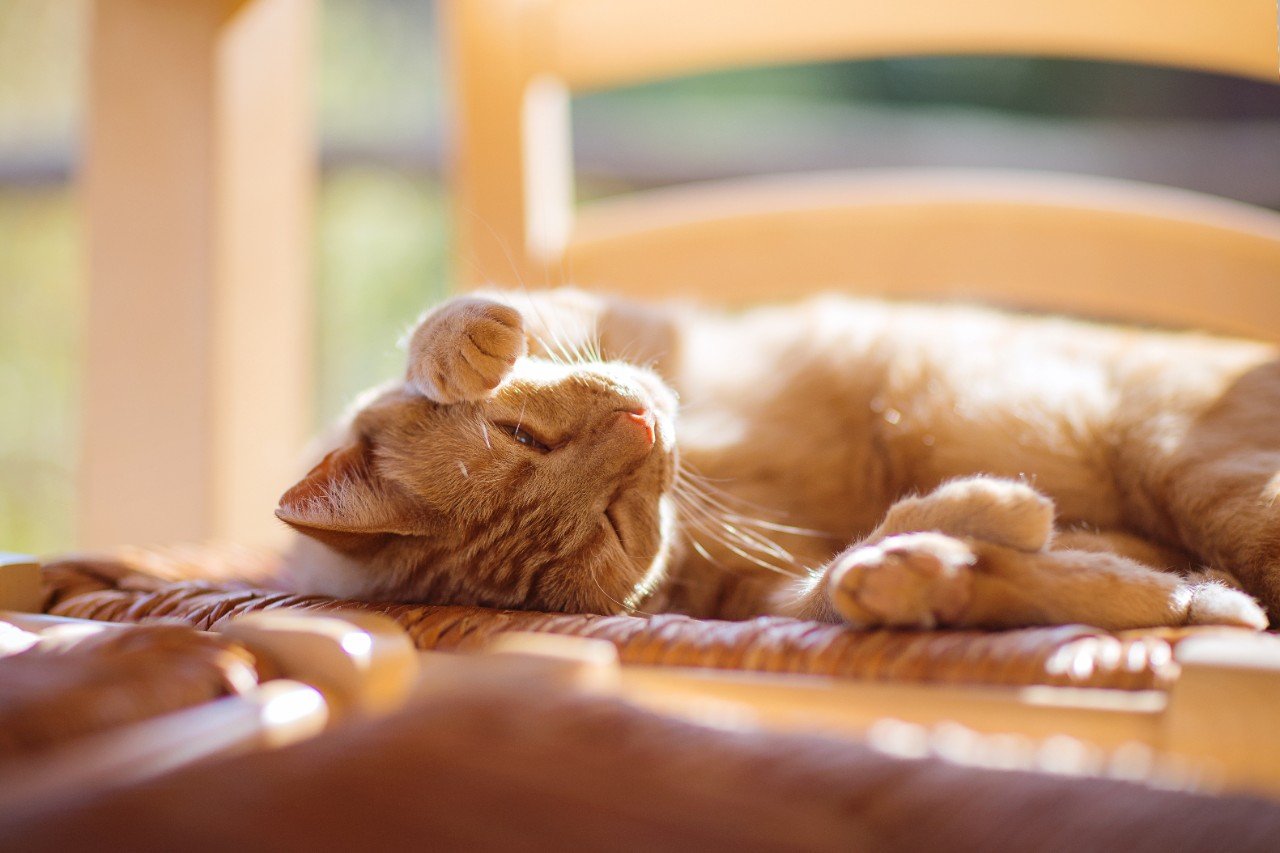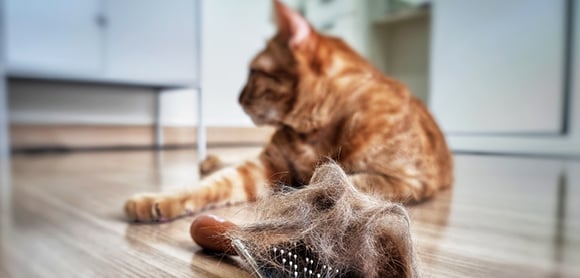How to groom your cat at home
Quick Links
Should you groom your cat?
Short-haired cats might not need much help with grooming, but medium to long-haired breeds such as Ragdolls, Persians and Siberians need frequent or daily attention to keep their coat neat and tidy and remove loose hair. Older cats may also need help with grooming if arthritis or stiff joints prevent them getting to hard-to-reach places. And every cat can benefit from a helping hand with tricky tangles or matted fur, which can cause discomfort and skin irritation.
Grooming your cat can also be good for their health, providing an opportunity for you to spot parasites, skin conditions and allergies, cuts, abscesses and any mysterious lumps. And while coughing up hairballs is a normal feline habit, regular brushing can help reduce the amount of loose hair your cat swallows while grooming themselves. Other benefits of grooming your cat include getting them comfortable with being handled and helping you both bond – assuming you can get them to sit still, that is!
Cat grooming tips
Pick your moment
Choose the right cat grooming tools
There are a bewildering range of cat grooming tools to choose from, so you might want to experiment with what works best for you and your cat.
- A soft bristle brush or grooming mitten may be enough for grooming short-haired cats, and is good for distributing natural oils through their coats. A mitten can be particularly useful for cats that aren’t used to being groomed, as it feels similar to being stroked.
- A pin brush with metal teeth (often capped with plastic) is a good-all-round cat grooming tool that’s helpful for gently working out tangles.
- Cats with medium or long hair are likely to need long-toothed combs and de-matting brushes. A slicker brush – usually a curved or slanted brush, with very fine metal teeth – is good for tackling matting and removing dirt and dead hair in longer-haired breeds.
- A flea comb can be another useful cat grooming tool. Its closely spaced teeth are designed to draw out and help you spot fleas, but can also be used to work out minor tangles.
‘If in doubt, ask your vet or groomer,’ says Pamela Campbell of Ayrshire Grooming Salon and Grooming School, the only National Pet College training school in Scotland. ‘They’ll be able to advise on the right brush for your pet’s particular coat type.’
Brushing your cat
Groom familiar areas first
Watch out for fleas while grooming
How to groom a cat that hates it
It’s always a good idea to start grooming your cat as a kitten to get them comfortable with the sensation. If they haven’t been groomed before, or if your cat hates being groomed, you may need to introduce them to the grooming brush gradually!
At first, simply keep the brush to hand while stroking your cat, and let them check it out in their own time. Reward them with a food treat for doing so, to create a positive association with the brush. Gradually progress to touching your cat with the brush, then giving them one or two gentle strokes with the brush, taking things at their pace and rewarding them at every stage.
While some cats are soon content to be brushed and enjoy the attention, others will fidget or try to get away. Be patient, don’t force them to stay put and stick to very short grooming sessions. The same applies if your cat is getting old and stiff, and doesn’t like to sit in the same position for very long. The more positive the grooming experience for your cat, the easier it will become to groom them in future.
How to keep your cat’s coat healthy
Regular grooming sessions will help to keep your cat’s coat in good condition. Pay particular attention to prime locations for matts – Pamela highlights areas behind their ears, tails, hips, groins and underarms, where ‘excessive friction can cause hair to matt and tangle.’
You don’t need to bathe your cat unless they really need it – most cats are capable of keeping themselves clean. You can also do your bit to look after their coat by making sure they’re getting a healthy diet. Inadequate nutrition, long-term stress and other health conditions can show up in a cat’s coat. So, if your cat’s fur or skin seems in worse condition than usual, if they’ve stopped grooming themselves or if they’re shedding more than normal, it’s worth booking a veterinary check-up.
Petplan is a trading name of Pet Plan Limited (Registered in England No. 1282939) and Allianz Insurance plc (Registered in England No. 84638), Registered office: 57 Ladymead, Guildford, Surrey GU1 1DB.
Pet Plan Limited is authorised and regulated by the Financial Conduct Authority. Financial Services Register No. 311969. Allianz Insurance plc is authorised by the Prudential Regulation Authority and regulated by the Financial Conduct Authority and the Prudential Regulation Authority. Financial Services Register No. 121849. Pet Plan Limited is a subsidiary of Allianz Insurance plc.












